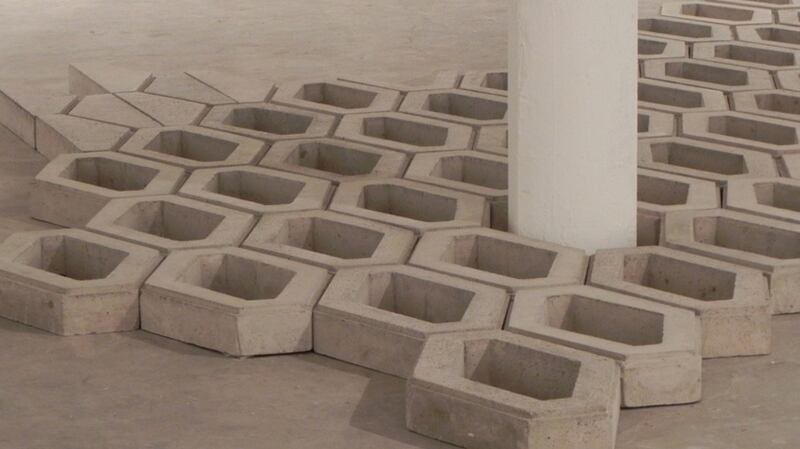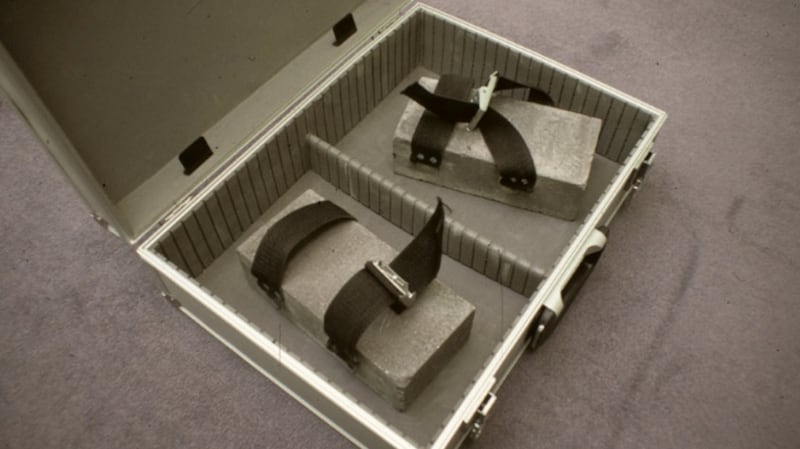Periodical Review #5
NCAD Gallery and Pallas Projects, Dublin
****


Pallas Projects, tucked away at the end of an alley off the Coombe in Dublin 8, is a gated art community where you press the buzzer to gain entry. But this year its fifth annual Periodical Review extends beyond those gates. The exhibition is split between Pallas and the NCAD Gallery, thus spanning the length of Francis Street.
A pioneer of artist-led studio and curatorial practice, Pallas is at pains to point out that the review is “not a group exhibition per se”, but pictures the gallery as a “magazine-like layout of images that speak”. It is both survey and compendium, highly selective and cheerfully, shamelessly partial.
It’s such a good idea, it’s amazing no one else does it. Perhaps Pallas, noncommercial and standing slightly apart from mainstream, publicly funded arts institutions, is ideally positioned to take on the task and bring a bit of attitude to it. Pallas marries a very limited funding base with meticulous aesthetic and curatorial standards (as do, for example, Ormston House, Askeaton Contemporary Arts and 126), which allows it to claim a degree of moral authority.
The four selectors – Pallas's Gavin Murphy and Mark Cullen; Anne Kelly of the NCAD Gallery; and Daniel Jewesbury, an artist and curator – nominate "what were for them significant moments, practices, works activity, objects". The aim is to encompass and share a wide "spectrum of practices". Sure enough, the net is cast ambitiously wide, so that we encounter, for example, Eileen Gray alongside 2015 DIT graduate Gemma Fitzpatrick.
Fitzpatrick's graduate piece, Things Taken for Granted, is a sculptural assemblage with audio. This bold effort addresses the tangled complexities of everyday life in a codified and not necessarily legible way. It reflects a current widespread inclination towards constructed sculpture with architectonic and engineering references, deployed with a liking for metaphoric rather than literal meanings. In the Review, see also Liam Crichton, Rachael Campbell-Palmer, Kevin Lindsay and even Eva Rothschild.
If you have not seen Rothschild's Boys and Sculpture, a 2012 video documenting what happens when a group of boys are let loose in a gallery of her works and given free rein, it's well worth dropping into the NCAD Gallery to have a look.
A video segment from Mark Curran's project, The Market, is also on view. The dense vegetation of Global Bank's landscaped park in Amsterdam symbolises the impenetrable financial manoeuvring of the banking system in moving and hiding money.
Brian Duggan's Not in Itself a Hazard juxtaposes glazed ceramics from the 1930s with a Geiger counter: the rad glazes used have "a detectable amount of uranium oxide". The piece, first exhibited in Basel, is intriguing and thought-provoking.
Timothy Furey is one of just a handful of Irish artists to have attended the prestigious Städelschule in Frankfurt am Main, but he shows just one small print.
Every artist included – those mentioned plus Cian Donnelly, Caroline Doolin, Gabhann Dunne, Glenn Fitzgerald, Seán Grimes, Siobhán Hapaska, Jacqueline Holt, Lucy McKenna and Gary Shaw – merits consideration, and the Review is a valuable exercise. Until January 15th and 16th respectively.
Amazement Insulates Us All/ Memento Vivere – Works by Damien Doyle and George Bolster
The Lab, Dublin
****
It might sound like a back-handed compliment for a work of visual art, but George Bolster's Self Erosion is beautifully written. The film is about depression, which is vividly described as entailing a process of self-erosion. Bolster has suffered from depression and he draws on his own experience, but his main subject stems from what happened to his friend and one-time companion, fellow artist Damien Doyle, who took his own life in 2010.
Bolster addresses this difficult material with great feeling and insight, and without self-indulgence or sentimentality. As an artist, he is the opposite of that musical breed: the self-pitying singer-songwriter. Art is about the future, he notes, and depression eclipses all interest in the future, and hence any interest in making art.
Not only has Bolster made an artwork, but he has also gathered several pieces created by Doyle. In fact, he has reconstituted, even revivified them. And they were not simply retrieved from storage: Bolster had to set about re-creating them “mostly from memory”. Inevitably, they can be reread with the benefit of hindsight.
In Buffer, the unmistakably ominous nature of a pair of brick sandals in an aluminium case is heightened. On the other hand, in Preoccupation: An Act before Insight, rubber doorstops are attached in a regular pattern to a wall of the gallery.
They may be thwarted in their nominal function, but in their novel configuration they resemble nothing so much as an indoor climbing wall, suggesting purposeful action and, metaphorically, a means of transcending the given. The horizontal doorstop becomes a means of vertical ascent. That is to say, the work is about the possibility of a future.
In Self Erosion, Bolster's narration, voiced over luminous, expansive cloudscapes, with subtle, periodic textual insertions, has to be one of the most eloquent, moving and persuasive descriptions of depression on record. Persuasive not in the sense that it will depress you, but in that he draws you irresistibly into comprehending the mindset of the person in a depressive state. It is central to Bolster's rationale that "amazement insulates us all".
Memento Vivere is not just Bolster's show, but Doyle's as well. The continuing vitality of the latter's works, their open- endedness and uncertainty, is part of the argument.
- Until January 16th, dublincity.ie













